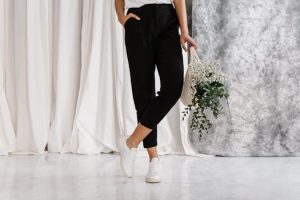The Art of Mixing Patterns and Textures
When it comes to decorating a space, there are endless options to choose from. From color schemes to furniture styles, the choices can be overwhelming. But one of the most fun and creative ways to add personality and interest to a room is by mixing patterns and textures. This can be a daunting task for many, as it may seem like an easy way to create a chaotic and overwhelming space. However, with a few tips and guidelines, you can master the art of mixing patterns and textures to create a cohesive and visually appealing room. So, let’s dive into the world of patterns and textures and learn how to make them work for any space!
The Basics: Understanding Patterns and Textures
Before we start mixing and matching, it’s important to understand the difference between patterns and textures. Patterns refer to any repeated design or motif on a surface, such as stripes, plaids, or florals. On the other hand, textures refer to the feel, appearance, or consistency of a surface, such as smooth, rough, or furry. Both patterns and textures play a crucial role in interior design, and when combined thoughtfully, they can create a dynamic and visually pleasing space.
Creating Harmony with Color
The key to successfully mixing patterns and textures is by creating harmony within the space. One way to achieve this is by utilizing a cohesive color scheme. Aim for two to three dominant colors and add in one or two accent colors to add interest and depth to the room. It’s essential to choose colors that complement each other and avoid selecting hues that clash. If you’re not confident in your color selection, start with a neutral base and add pops of color through patterns and textures.
Scale and Proportion
Another crucial factor to consider when mixing patterns and textures is the scale and proportion of each element. Selecting patterns and textures that vary in size and scale can add visual interest and prevent the space from feeling too busy or overwhelming. For example, if you have a large patterned rug, balance it out with smaller or more subtle patterns in the upholstery or curtains. When it comes to proportions, try to achieve a balance between small and large elements to create a cohesive and harmonious look.
Layering for Depth
Layering is an excellent way to add depth and dimension to a room. This is especially important when mixing patterns and textures as it helps tie everything together. Start with a neutral base layer, such as a solid-colored sofa or rug, and then add in patterned or textured elements. Don’t be afraid to mix different textures, such as a smooth leather sofa with a plush velvet throw blanket or a woven jute rug with a silky patterned pillow. The key is to have a combination of different textures to create a balanced and visually appealing space.
Mixing Patterns and Textures in Different Ways
There are several ways to mix patterns and textures, depending on your personal style and the look you’re trying to achieve. One option is to mix patterns in a tonal color scheme. This means selecting patterns in similar colors but with different shades and intensities. For instance, you could pair a light grey damask wallpaper with a darker grey striped chair. This creates a subtle yet visually interesting look.
Another way to mix patterns and textures is through contrasting styles. This means combining patterns and textures that are completely different from each other. For example, you could pair a modern geometric patterned rug with a traditional floral print armchair. This creates a bold and eclectic look that adds personality and character to the room.
Final Tips and Tricks
As with any design element, it’s essential to know when to stop. Mixing patterns and textures can easily go wrong if you overdo it. Stick to a few patterns and textures and repeat them throughout the space for a cohesive look. Additionally, try to maintain an overall balance and symmetry in the room. If you have a busy patterned wallpaper on one wall, balance it out with a solid-colored wall on the opposite side.
In conclusion, the art of mixing patterns and textures is all about balance, harmony, and creativity. Don’t be afraid to experiment and have fun with it. With these tips and tricks, you can confidently create a visually appealing space that reflects your unique style and personality!










